
“Yom Hazikaron laShoah ve-laG’vurah” – “Day of Remembrance of the Holocaust and the Heroism” – is observed on the 27th day of the month of Nisan (the anniversary of the Warsaw Ghetto uprising), which this year begins after sunset on the evening of Wednesday, April 7, and concludes the evening of Thursday, April 8. Community events commemorating the Holocaust are planned throughout the state during that week. (Statewide events are listed on p19. Events will be added as they are submitted.)
Each year, Yom Hashoah is marked by memorial gatherings held throughout the world, highlighted by candle-lighting ceremonies with elderly survivors, speeches by dignitaries, and the reading aloud of the names of the six million who perished.
In Israel, a siren wails for two solid minutes in the morning, bringing the country to a stand-still, as pedestrians freeze in place, students stop their learning and workers their tasks, and even drivers climb out from behind the wheel to stand silently with bowed heads.
This year, much like last year, Holocaust Memorial Day will be a quieter event – though no less somber – as the day’s events are held virtually, owing to the pandemic.
IBM and the Holocaust
By Edwin Black
(JNS) Without the International Business Machines Corporation, there would still have been a Holocaust. Einsatzgruppen murder squads and their militia cohorts would still have murdered East European Jews bullet by bullet in pits, ravines and isolated clearings. But it was IBM that helped the Third Reich create the industrial, high-speed, six million-victims Holocaust – metering ghetto residents out to trains, then carefully scheduling the moving of those trains to concentration camps for mass murder and cremation within hours, clearing the way for the next shipment of victims, day and night.
Custom IBM programs controlled the census and registration processes, organized the pauperization of the Jews, and ensured that the trains ran on time. There was an IBM customer site – the Hollerith Abteilung – in almost every concentration camp, some with tabulating machines and some with card organizers. IBM even engineered Germany’s odious extermination-by-labor campaign, where skills were matched to slave labor needs and Jews were called up to be worked to death. IBM’s code for a Jewish inmate was “6” and its code for a gas chamber was “8.” The evidence indelibly proves that IBM was an indispensable and pivotal partner in the greatest crime in history. But to IBM, the Holocaust was just another business project.
Thomas Watson, Sr., the founder of the IBM World Trade Corporation, the IBM subsidiary focused on foreign operations, was a sociopath lacking any moral compass. He was no stranger to crime. He had been convicted of extortion in the infamous National Cash Register scandal before he was ever handed the reins of IBM. An evidence technicality allowed his conviction to be overturned and Watson to escape prison time.
Watson received a percentage of every Reich transaction and in 1937 was honored by Hitler in Berlin at a grandiose award ceremony.
How did IBM get involved? When Hitler came to power, he wanted to locate and destroy the Jews of Germany, Europe and the world. That required the resources of a computer, but in 1933, no such computer existed. What did exist at the time was the IBM punch card. The punch card was invented at the end of the 19th century for the U.S. Census Bureau, from which IBM stole the technology. The card was a people tracker from its inception.
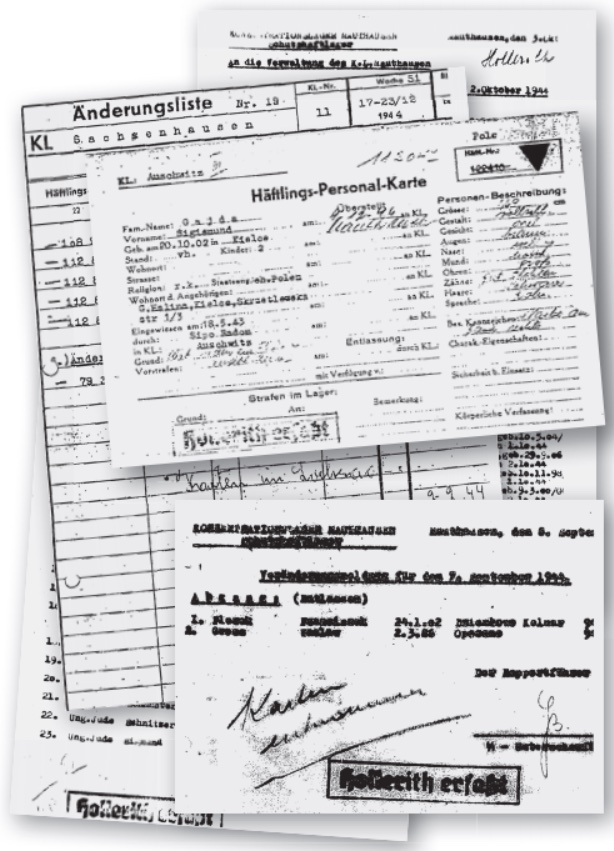
It was the IBM punch card’s use in Nazi Germany that gave birth to “information technology.” Invented by a German American named Herman Hollerith, this card, about the size of a dollar bill, could store for retrieval detailed information about a person, place, or process depending upon the arrangement of holes on the card, which were punched into rows and columns. The card would be fed into a high-speed reader, and out would come personal information.
Punch cards made it possible to count not only the number of people in a room but how many of them were men, how many were women, how many were Jews, how many were Christians, how many were blonde, how many brunette, how many were bankers, how many were tailors – every trait. IBM punch cards thus not only delivered total counts, but also detailed personal information about those counted. The Information Age – meaning the era of the individualization of statistics, or the identifying and quantifying of a specific person within an anonymous count – was born not in Silicon Valley, but in Berlin in 1933.
It was Watson who personally micromanaged all aspects of the 12-year alliance between IBM and the Nazis. The relationship began just after January 30, 1933 – the first moments of the Third Reich – and ended in the first week of May 1945, the last gasp of Hitler’s regime.
Under Watson, IBM eagerly contacted the Hitler regime and made clear that it was “the solutions company.” Indeed, IBM would supply the means to any solution the Nazis needed, including the Final Solution.
The first thing Hitler wanted to know was exactly how many Jews resided in Germany. IBM hired thousands to execute a door-to-door racial census. Once Hitler had the names and locations of Germany’s Jews, IBM created systems to tabulate that data against professional and employment databases as well as financial institutions to help Germany systematically pauperize them. Location data was then used to organize the mass transfer of Jews from their homes into ghettos. Ghetto residents were then systematically forced onto trains to the camps.
Those trains ran on IBM punch cards and owed their punctual timetables to special IBM scheduling programs. All the work and prisoner data from all the concentration camps was fed into a central nerve center in the T-Building at Oranienburg, known as Section D-II, and powered by custom-wired IBM machines. Everything IBM did was custom and tailored to the Nazis’ specific needs.
All IBM machines in Nazi Europe were leased, with monthly payments. They were insured by American and German insurance companies at their Reich locations and serviced by repairmen twice-monthly on site, whether located in downtown Berlin or at Auschwitz. Hollerith machines were incapable of operating without IBM’s custom punch cards, and each card could be used only once. Without a continuing card supply from IBM, the machines would have been like rifles without bullets.
In the 20 years since my book “IBM and the Holocaust” was published, IBM has never asked for a single change to the text nor rebutted a single fact.
Today, fear of what big tech can do to surveil, censor, and control our lives – from China to California – has heightened interest in the book and its revelations. The connection is clear. To get a glimpse into our perilous future, we need only look back at what IBM helped Hitler do during the Holocaust, in the era before computers existed. What could a Hitler-type regime do today, and how quickly could it do it with today’s high-speed, hand-held technology?
It is also worth asking why a company like IBM chose to participate in genocide. It was never about Nazism; it was never about antisemitism. It was about money. “Business” is, after all, the company’s middle name.
IBM has proven that some corporations can get away with murder.
Edwin Black is the award-winning New York Times bestselling author of “IBM and the Holocaust,” “Funding Hate.” In his book “Financing the Flames,” he documented the terrorist salaries now known as “pay to slay.”
Turkey: How nearly 800 Jewish refugees perished during the Holocaust
By Uzay Bulut
(JNS) Feb. 24 marked the 79th anniversary of a Holocaust-era tragedy in which nearly 800 Jewish refugees from Axis-allied Romania lost their lives in the Black Sea. Their ship, the Struma, exploded in 1942 following an ill-fated attempt to reach Mandatory Palestine after they were not permitted entry into Turkey, which was then ruled by the Republican People’s Party (CHP).
As Europe’s Jews were being systematically annihilated during the Holocaust, thousands desperately tried to escape the Nazis and reach their ancient homeland, Israel, which was then part of the British Mandate of Palestine.
During one of these attempts, Jewish refugees planned to travel to Istanbul by ship, apply for visas there and then set sail to Palestine. Scholar Corry Guttstadt describes in her book “Turkey, the Jews, and the Holocaust “ the events that led to the Struma catastrophe:
“The Struma was a Romanian passenger streamer sailing under the Panamanian flag that reached Istanbul on Dec. 15, 1941, with 769 Jewish refugees on board. Not only was the ship completely overloaded but it was also not seaworthy because of a detective engine. For 70 days over the winter months of 1941-1942, the Struma sat in the Bosporus. Every day, the inhabitants of Istanbul could see the banner ‘Save Us’ that was fastened to the ship. Although Jewish organizations offered to assume all costs for housing the destitute passengers, they were forbidden to go ashore. Only a few people received special permission. The Turkish authorities hid behind the British position since the refugees did not have Palestine Certificates. After several weeks of anxious waiting, on February 24, 1942, the Turkish coast guard forced the Struma to leave Turkish coastal waters. While massive police forces had entered the ship in order to prevent any resistance of the passengers, the anchor chain was cut and the hapless vessel, without a working engine, was towed onto the open seas. The news that Great Britain had granted the children and youths on board the Struma entry to Palestine the day before came too late.
“Only a short time after the Turkish tugboat had released the disabled ship, it was struck by a Soviet torpedo and went down. With the exception of David Stoliar, who managed to save himself by swimming, all refugees died off the coast of Istanbul. Stoliar was saved after almost twenty-four hours in the water; after his rescue, he was locked in a cell at an Istanbul police station for three weeks and interrogated. Only after the intervention of Simon Brod was he finally released.
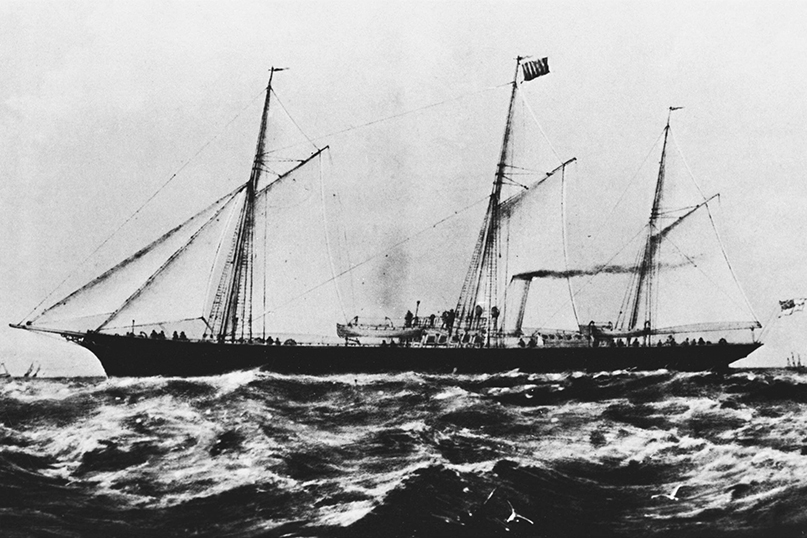
“The Turkish press had called the passengers of the Struma ‘uninvited guests’ (Vatan) and victims of ‘greedy ship brokers.’ Only one telegram by the state agency Anadolu Ajansi informed the Turkish press that work was stopped in Palestine for two days and commemorative services were held in memory of the Struma dead. The sole newspaper that picked up the news report was Ulus, in its edition for March 12, 1942. This led to a debate in the Turkish parliament on April 20, 1942, that focused not on the events themselves but on the alleged Jewish propaganda against Turkey. Some MPs remarked indignantly that ‘foreign foulers of their own nest’ had ensconced themselves at Anadolu Ajansi. Prime Minister Refik Saydam declared with regard to the sinking of the Struma, ‘Turkey cannot become the home of those who are not wanted by anyone else.”’’
Ishak Alaton, a well-known Turkish-Jewish businessman who passed away in 2016, was 15 years old when the Struma reached Istanbul. He was one of the many members of Istanbul’s Jewish community to help the passengers and carried food to the ship. As Alaton recalled:
“The ship was not allowed to be moored to the dock; they [authorities] wanted to keep it [in the sea]. Supplies sufficient for 770 people and barges were taken [by the Jewish community] to the ship. I would arrive in the evenings and help to unload the sacks that were taken there by trucks. The [Turkish] Red Crescent only provided a showpiece aid. The real aid was organized by the elders and notables of the Jewish community living in Istanbul. My father Hayim Alaton was in that committee; he actually strove [to help the passengers]. For two months, the food, bread, and supplies needed for the survival of the passengers arrived in trucks. I still remember the smell of the bread today. Because we made a deal with the bakery and hot bread from ovens was put in sacks. [Businessman] Vehbi Koç saved four people from the ship. However, it was not covered by newspapers much. There was already censorship. There was no free press.”
Alaton said that Struma’s engine was taken to a shipyard in the Golden Horn to be repaired, but the ropes on which the anchors were tied were cut after an order from the government in Ankara without notice to anyone. “That is, 770 people were left to die by the government of the time,” added Alaton.
Peter A. Aldea’s maternal grandfather, Paul Fainaru Iacobovici, was one of the victims of the Struma catastrophe.
“Forcing 790 people to share a decrepit boat without beds or sanitary facilities in January/February weather was heartless,” Aldea told JNS. “We treat animals better. To then pull the disabled Struma boat into sea at the end of February and leave those people to die was criminal. …The Jewish community offered to take the Struma refugees in and be responsible for them but Turkish authorities refused.”
“Redemption, however, begins with remorse and education. The Germans have done it as have the Japanese. To begin to make amends, the Turks should publicize the story of the Struma and their less than honorable role in it,” he said.
Alaton, who was a witness to the Struma’s fate in the Sea of Marmara, also voiced similar sentiments in an interview in 2012:
“Someone from Ankara or from the party that was in charge of the government at the time should come out and apologize. It is time. We want to hear the sentence ‘I’m sorry.’ Turkey should show the courage to apologize and if it can do that, it will be purified, exalted and respected. We need to learn to apologize, and we should comprehend the virtue [of apologizing]. We need to reconcile with our past, and this must be our greatest goal.”
Turkey, however, has not recognized, apologized for or given reparations for any such incidents in its history. But until it honestly faces its crimes and secures justice for its victims, it will not be a truly civilized country.
Uzay Bulut is a Turkish journalist and political analyst formerly based in Ankara. She is currently a research student at the MA Woodman-Scheller Israel Studies International Program of the Ben-Gurion University in Israel.
Israeli, Austrian presidents attend Holocaust remembrance ceremony in Vienna
(JNS) Israeli President Reuven Rivlin and Austrian President Alexander Van der Bellen participated in a Holocaust-remembrance ceremony in Vienna on Wednesday, March 17. The ceremony, held at the city’s monument to Holocaust victims in Judenplatz, was attended by local residents, Holocaust survivors and members of the Vienna Jewish community. The national anthems of both countries were played, and the chief rabbi of Vienna read the Kaddish prayer for mourners. The presidents laid wreaths at the monument on behalf of the State of Israel and the Republic of Austria, and delivered remarks.
“Austria did not wake up one morning to the swastikas of the Third Reich,” said Rivlin. “Antisemitism, racism and xenophobia had been incubating for years. That is how the horrors were born–out of apathy and disregard.”
Turning to the COVID-19 pandemic and its effects on the world, Rivlin said, “The global pandemic which has attacked us … has only emphasized our shared commitment and the need for human solidarity, caring, compassion. I cannot deny the joint global effort to fight the virus has given me hope–hope that we have, perhaps, learned a lesson about the overriding commitment to be there for one another in times of trouble.”
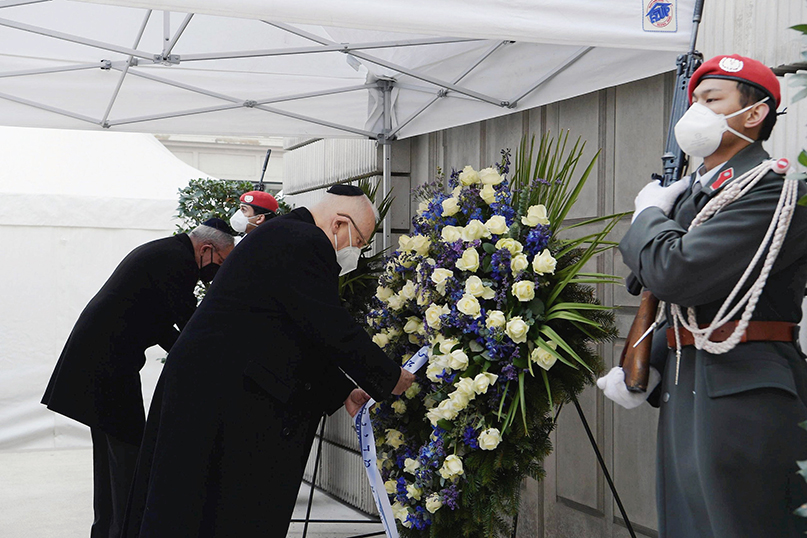
President Van der Bellen said, “Nazi antsemitism and racism did not fall from the sky. They were here before, buried deeply in Austrian society. The Holocaust was the dreadful peak. Therefore, it is our strong and commonly held desire, and even our duty, to oppose any resurgence of inhumanity, racism and anti-Semitism decisively and without compromise. Our aim today is to allow Jewish life without interference in any place–Israel, Europe, Vienna or any other place. It is the right of the Jewish people to live in any place in peace and safety.”
Rivlin held a meeting earlier in the day with Austrian Chancellor Sebastian Kurtz. During the meeting, the president expressed gratitude for Austria’s commitment to fighting antisemitism with a new national strategy, and for its support for Israel with regard to the International Criminal Court.
82 years later, reunited friends torn apart by Holocaust Zoom regularly
(JNS) Two Jewish friends from Berlin who believed that each other had been killed during World War II and the Holocaust recently reunited with the help of the USC Shoah Foundation.
After Ana María Wahrenberg and Betty Grebenschikoff said goodbye to each other in a German school year in May 1939, Wahrenberg’s family fled to Chile, while Grebenschikoff traveled to the United States via Shanghai. This past fall, they saw each other again via Zoom for the first time in 82 years.
“In her [USC Shoah Foundation] testimony, Betty said she had been actively searching for her long-lost friend for her entire life; she even specifically mentions Ana María’s name in the hopes that this will help her find her best childhood friend,” said Rachael Cerrotti, who works as a creative producer for the USC Shoah Foundation, which has more than 55,000 video testimonies from Holocaust survivors and witnesses, reported the Times of Israel.
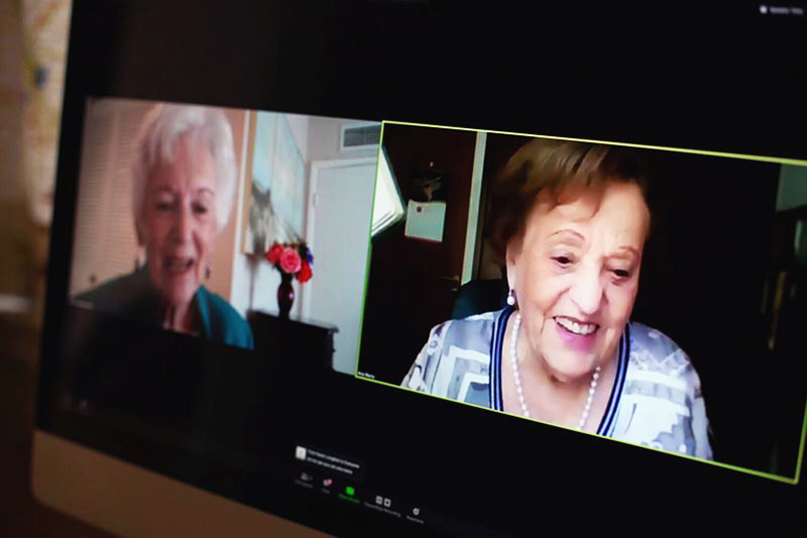
Credit: USC Shoah Foundation.
After hearing Wahrenberg speak at a virtual Kristallnacht event, Holocaust testimony indexer Ita Gordon remembered Grebenschikoff’s testimony given to the foundation 24 years ago and made the connection between the two women. Cerrotti said “what followed was a series of phone calls” to put the two women back in touch.
“This has been a great gift, which, at this point in my life, I am boundlessly grateful for,” declared Wahrenberg of reuniting with her childhood friend in November. “Betty and I have had several encounters by WhatsApp and Zoom. We [now] talk every Sunday for about an hour … we will never catch up! Our conversations are great; we still have common interests and, of course, many, many memories that we still share. As soon as we get out of this horrible pandemic, we will try to get together in some corner of the world.”
Yad Vashem ‘deeply disturbed’ by Polish court verdict in Holocaust libel case
(JNS) Israel’s Yad Vashem Holocaust memorial center said on Thursday, Feb. 11, that it was “deeply disturbed” by the implications of a Polish court’s recent ruling in a libel case involving the alleged wartime actions of Edward Malinowski, the former mayor of Malinowo, Poland.
On Tuesday, Feb. 9, the court ordered professors Jan Grabowski and Barbara Engelking, the editors of “Night Without End: The Fate of Jews in Selected Counties of Occupied Poland,” to issue a retraction of their work and apologize to Malinowski’s niece, who initiated the libel suit. The two-volume study cites a Polish survivor as saying that Malinowski gave up Jews to the Nazis.
“Any attempt to limit academic and public discourse through political or legal pressure is unacceptable and constitutes a substantive blow to academic freedom,” said Yad Vashem in a statement. While acknowledging the verdict, Yad Vashem said that it “knows and respects the professional work of the scholars” and will publish the English edition of the book, which the museum said was grounded in “scrupulous analysis of a body of existing documentation.”
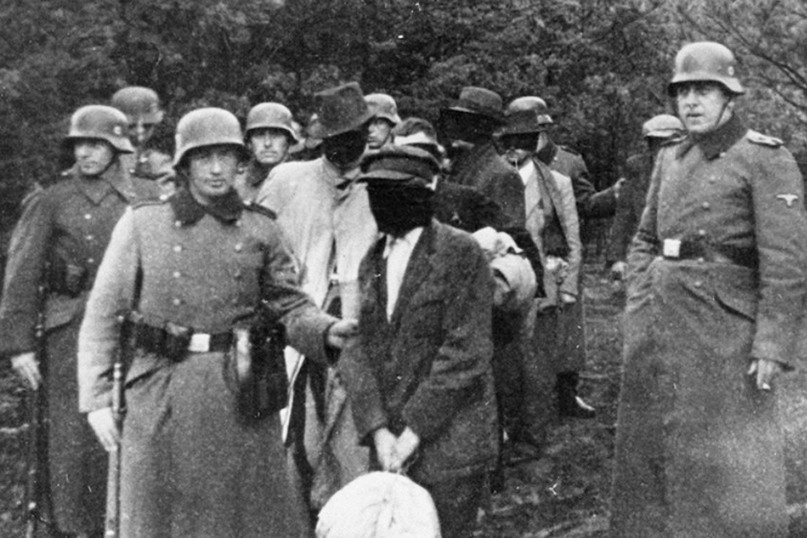
(United States Holocaust Memorial Museum)
Grabowski is a professor of history at the University of Ottawa in Canada, and Engelking is the founder and director of the Polish Center for Holocaust Research in Warsaw.
The libel case stems from a controversial 2018 law passed by the Polish government that made it a civil offense to make false accusations about Polish responsibility for the Holocaust. The law originally included criminal penalties but was amended after an international outcry.
“The existing diverse documentation, along with many decades of historical research, shows that under the draconian Nazi German occupation of Poland, and despite the widespread suffering of the Polish people under that occupation, there were Poles who were actively involved in the persecution of the Jews and in their murder,” noted Yad Vashem.








 Southern New England Jewish Ledger
Southern New England Jewish Ledger










